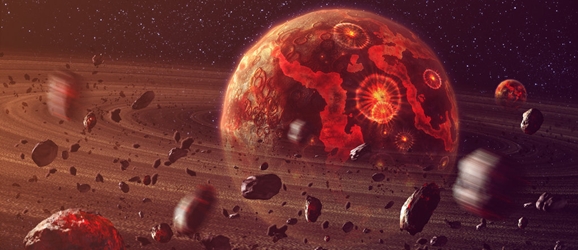Astronomers Spot Possible Baby Planet Forming
This article is more than 2 years old

You know how Anne Geddes’ baby photos sit at the precise intersection of “eye-gougingly adorable” and “Oh my God, they’re treating those infants like veal!” Can you just imagine what those pictures would look like if the subjects were baby planets? There’s no way there’s a Pea Pod costume that big!
For study published in Astrophysical Journal Letters, a research team led by ETH Zurich astronomer Sascha Quanz published their findings of a “protoplanet” located a relatively close 335 light years away. This would be one of the only observations so far of a planet in the early stages of its existence. How can one see a baby planet from that far away? Well, aside from the usual method of studying blips in star orbits to find planets, this sucker has a mass at least the size of Jupiter, and is two to three times its size, which clearly means that the universe had to have a C-section.
“If we are correct, this is the first time we are seeing a planet forming inside its natal environment,” said Quanz, who along with colleagues observed the planet through a high-resolution infrared camera linked to the Atacama Cosmology Telescope in the Chilean desert. The protoplanet was seen as a bright orbiting blob in the disk of material surrounding the star.
While it isn’t clear if the planet formed in the “dust colliding” or the “collapsed gravity” manner, but the scientists are still hoping to get all of the information they can about it. “We can try to find out the chemical and physical properties of the disk that causes a planet to form there,” said Dr. Quanz. Someone get Barbara Streisand to record the soundtrack.
Image by deviantArtist RMirandinha












